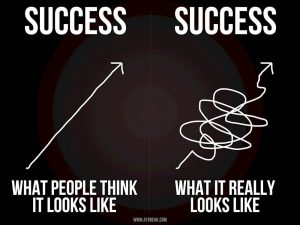 If you’ve ever faced a weight plateau, you’re like many other people trying to lose those extra pounds. The answer isn’t always simple. I have clients in Florida that have failed before they started to workout with me because they gave up when plateauing occurred. That’s not an option in my book. In fact, there are ways to break through and even avoid it. It’s important to understand why plateauing occurs, first.
If you’ve ever faced a weight plateau, you’re like many other people trying to lose those extra pounds. The answer isn’t always simple. I have clients in Florida that have failed before they started to workout with me because they gave up when plateauing occurred. That’s not an option in my book. In fact, there are ways to break through and even avoid it. It’s important to understand why plateauing occurs, first.
One reason plateauing occurs is that the body is an amazingly efficient machine.
That’s right! While efficiency is a good thing, when it comes to exercise and weight loss, it can slow your progression. It means the body burns fewer calories when you’re doing that particular exercise than it did when you first began it. In order to avoid this type of interference with weight loss, the answer is simple. Vary the workout frequently. That’s one reason trainers provide a wide variety of workouts. By changing the workout frequently, your body will always be working at maximum potential and burning more calories.
Expect to lose weight quicker when you first start.
Losing weight is all about the math. Your body has to burn 3500 calories more than it consumes to lose one pound. When you’re heavier, your body needs to burn more calories just to move from place to place and do every day activities. As you shed weight, it burns fewer calories. Those extra pounds are like carrying an extra weight around all day, so it makes sense that when you put the weight down, your calories burned will be fewer. The solution is to either work harder or eat less. It takes constant evaluation of both your workout program and diet to get the results you want.
If the pounds don’t go down, but you’re working hard and eating right, consider other ways to measure progress.
While we always think of getting in shape to look great as watching the scales go down, it’s not always the most reliable information. Yes, you want to lose ten pounds, but what is that actual goal? Is it to look better and feel better? You can judge how you feel, but as far as looking better, what does that mean? If it’s fitting into a smaller size clothing, you might not need to watch the scales glide downward to do it. Muscle tissue weighs more per cubic inch than fat tissue does, so when you lose inches, but not pounds, you’re building more muscle tissue. Just like comparing the size of two containers, one holding a pound of feathers and one holding a pound of lead, the one containing lead will be smaller. Maintaining your weight while building muscle tissue also means you’ll be narrower.
- Shedding weight not only includes what you eat, but also what you drink. If you’re following a healthy diet, but washing down the food with a soft drink, you’re pounding on extra calories that you don’t need. Studies show that diet soft drinks actually add inches to your waist.
- Don’t weigh yourself every day if you get discouraged easily. There are fluctuations in weight that occur normally, such as water weight, which can give a false picture of progress.
- You can keep plateauing at bay if you increase your daily activity. Take the stairs, rather than the elevator and park further from the store so you walk more.
- Find workouts you enjoy. While some of your exercise can be traditional, consider walking, biking or even rock climbing or kickboxing to supplement it. If you have fun, you’ll do it more often.
